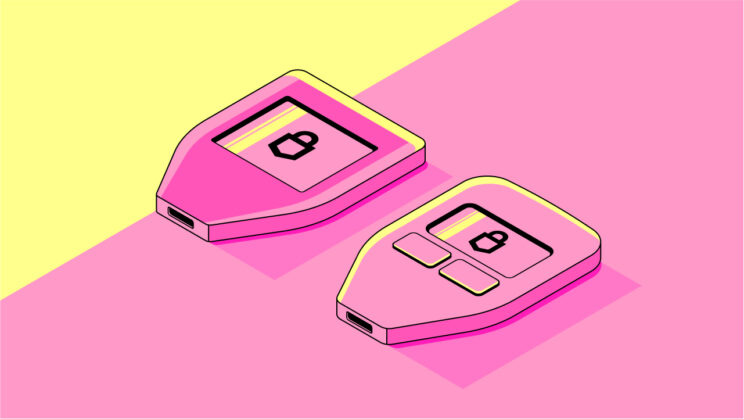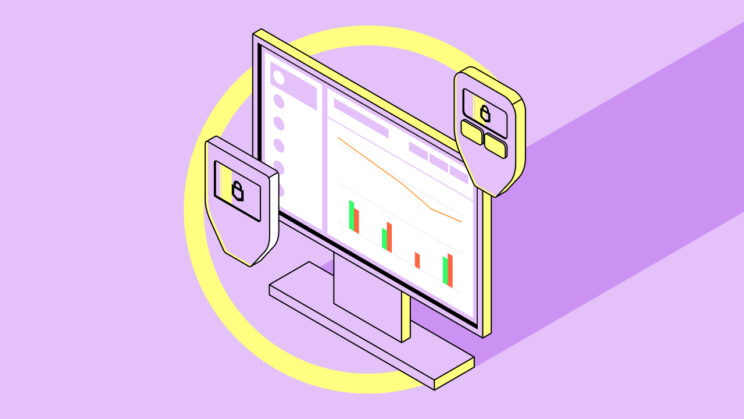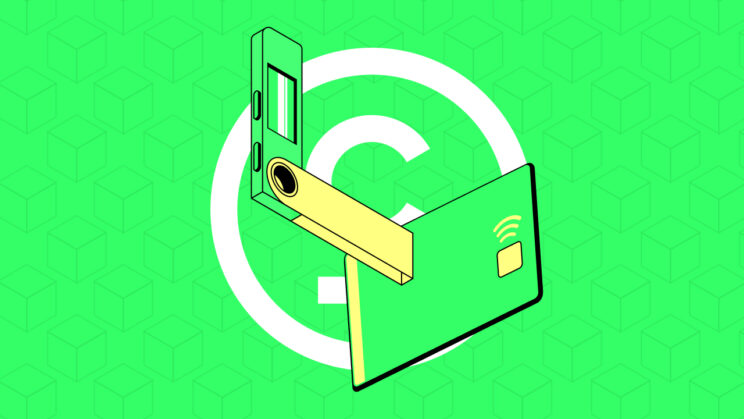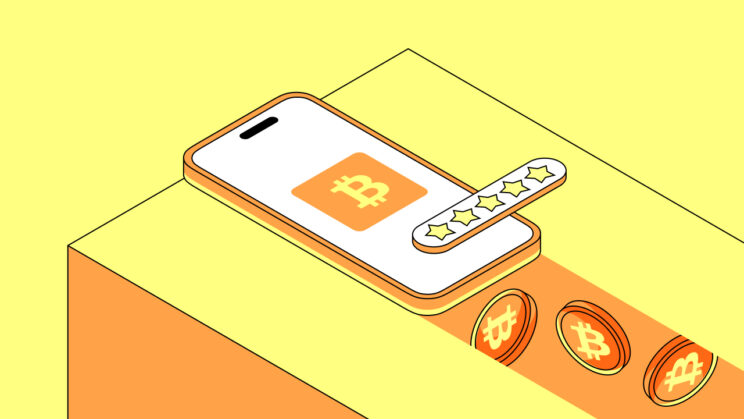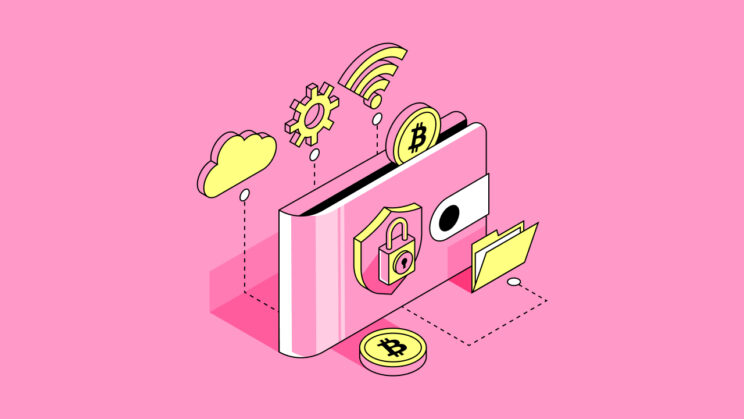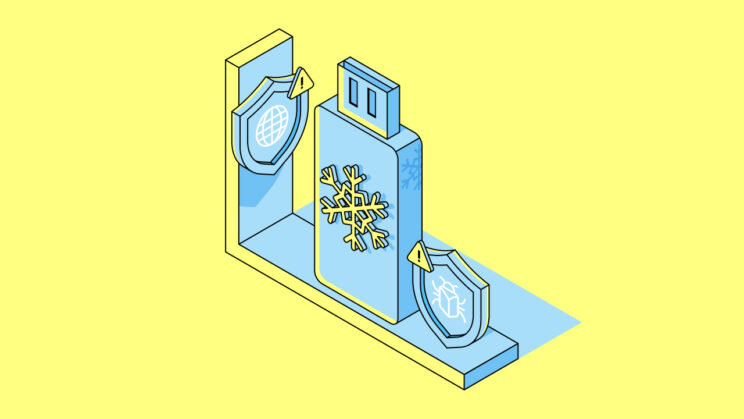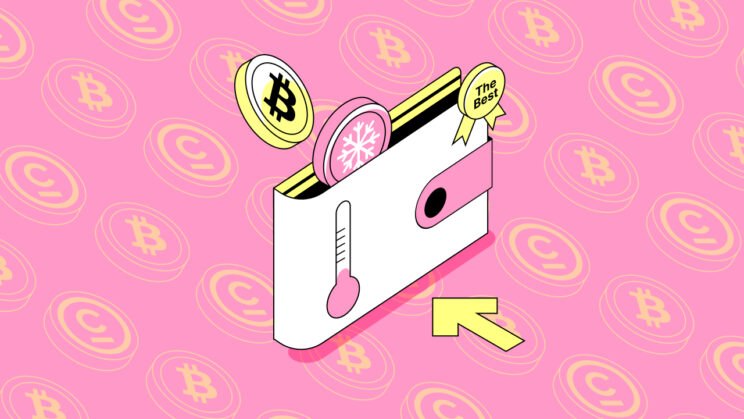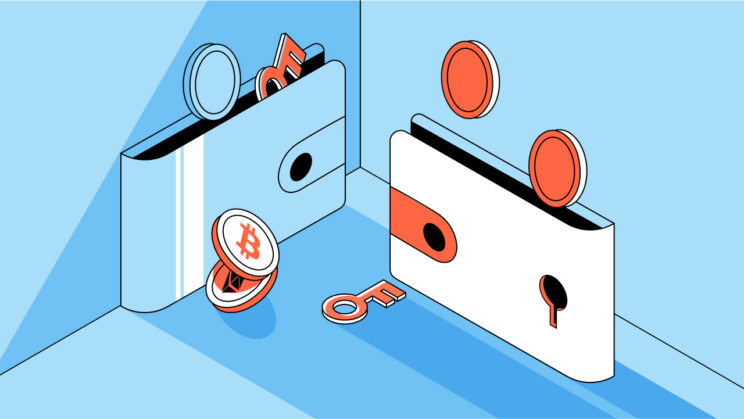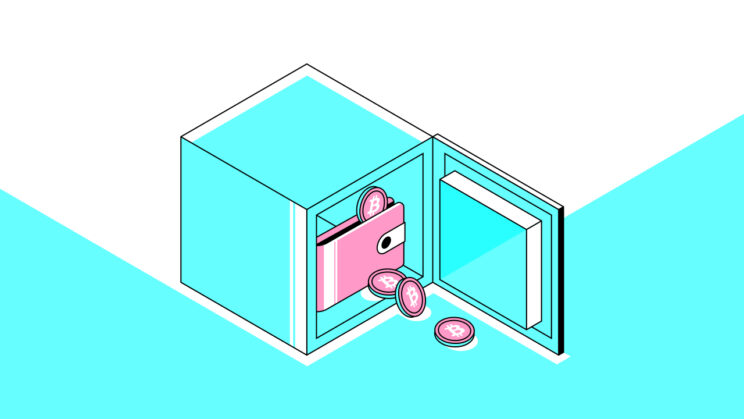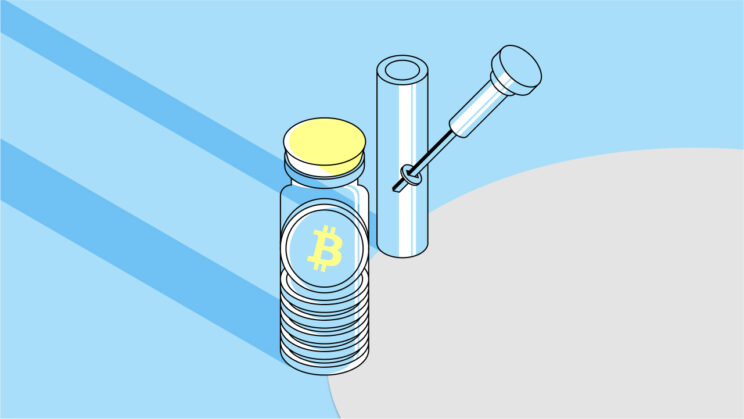How to set up a cryptocurrency wallet
Setting up a cryptocurrency wallet can be the first step in your journey into the world of cryptocurrency.
Cryptocurrency wallets are an integral part of the cryptocurrency world and play an important role in managing them. Along with the growing popularity and proliferation of cryptocurrencies, wallets are becoming an essential tool for storing, sending and receiving different types of digital assets.
What are cryptocurrency wallets?
Cryptocurrency wallets are software or devices that allow users to manage their cryptocurrencies. They store the private and public keys needed to perform transactions and confirm ownership of assets.
Benefits of cryptocurrency wallets
Asset storage
Cryptocurrency wallets provide secure storage for cryptocurrency assets such as Bitcoin, Ethereum, Litecoin and many others. They store private keys that are used to access your assets and sign transactions.
Sending and Receiving Payments
Wallets allow users to send and receive payments in cryptocurrency. With wallet addresses, you can easily send cryptocurrency to other users around the world without having to involve intermediaries or banks.
Ease of Use
Cryptocurrency wallets are designed with usability in mind and provide an intuitive interface. They allow users to check balances, view transaction history, and manage their assets.
Mobility
Mobile cryptocurrency wallets allow you to access your assets anytime, anywhere. With mobile wallets, you can make transactions directly from your smartphone, making them convenient for everyday life.
Security
Cryptocurrency wallets protect your private key and transaction signatures. Many wallets offer additional security measures such as two-factor authentication, data encryption, and the ability to back up your wallet.
Overall, cryptocurrency wallets are an essential tool for managing cryptocurrency assets. They provide secure storage, fast and convenient transactions, and additional features for asset management.
Usability of crypto wallets
The usability of different types of cryptocurrency wallets can depend on individual preferences and user needs. We will now look at some of the benefits of using each type of wallet.
Mobile cryptocurrency wallet
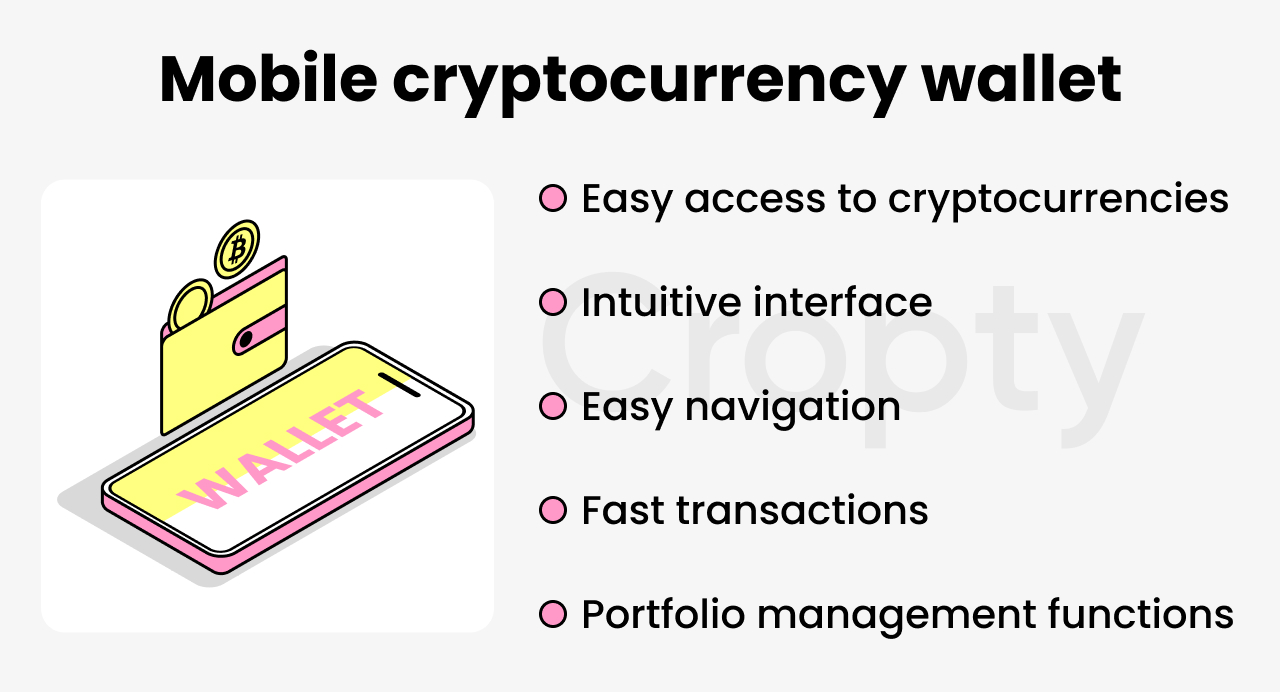
Mobile wallets offer the convenience of accessing cryptocurrency assets right from your smartphone. They usually have an intuitive user interface and easy navigation. Mobile wallet features include fast transactions, easy integration with QR codes to accept and send payments, and portfolio management features including viewing balance and transaction history. Mobile wallets also often offer fingerprint or facial recognition authentication features for increased security and ease of use.
Online cryptocurrency wallet
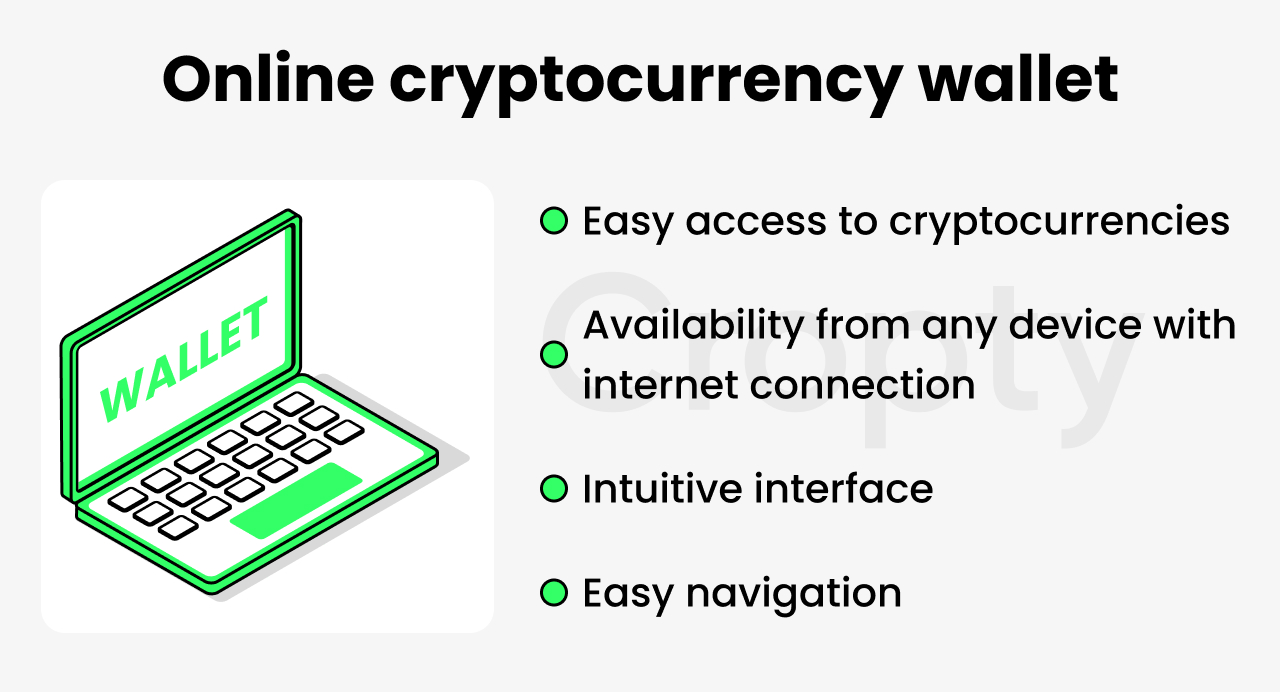
Online wallets offer the convenience of accessing crypto-assets through a web browser. Their main advantage is accessibility from any device with an Internet connection. They usually have a simple and intuitive interface, making them accessible to a wide range of users. Online wallets provide asset management features, including viewing balances, transaction history, and the ability to send and receive payments. It is important to note that the use of online wallets requires consideration of the security and reliability of the chosen platform.
Desktop cryptocurrency wallet
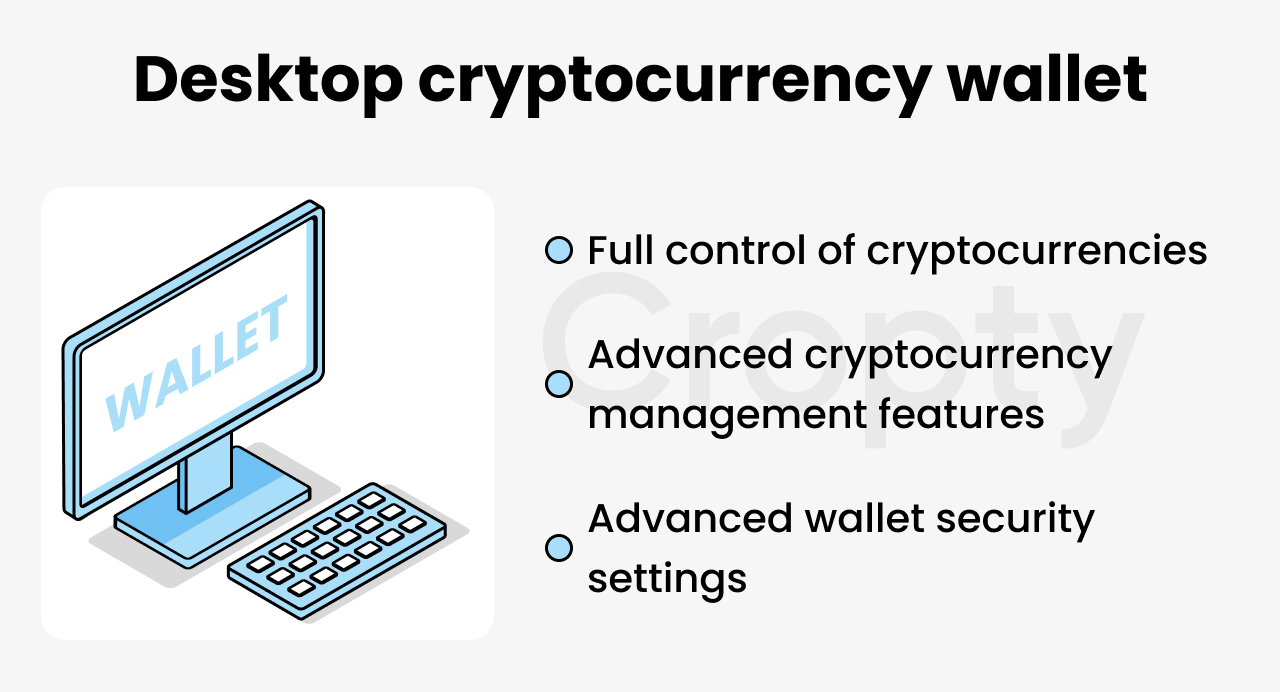
Desktop wallets offer full control over cryptocurrency assets by storing them on your computer. This can be preferable for users who prefer to keep their data local and have independence from third-party services. Desktop wallets usually have advanced asset management features and provide more options for configuring wallet security. They may require technical understanding and security concerns, as a computer can be susceptible to viruses or hacker attacks.
Paper cryptocurrency wallet
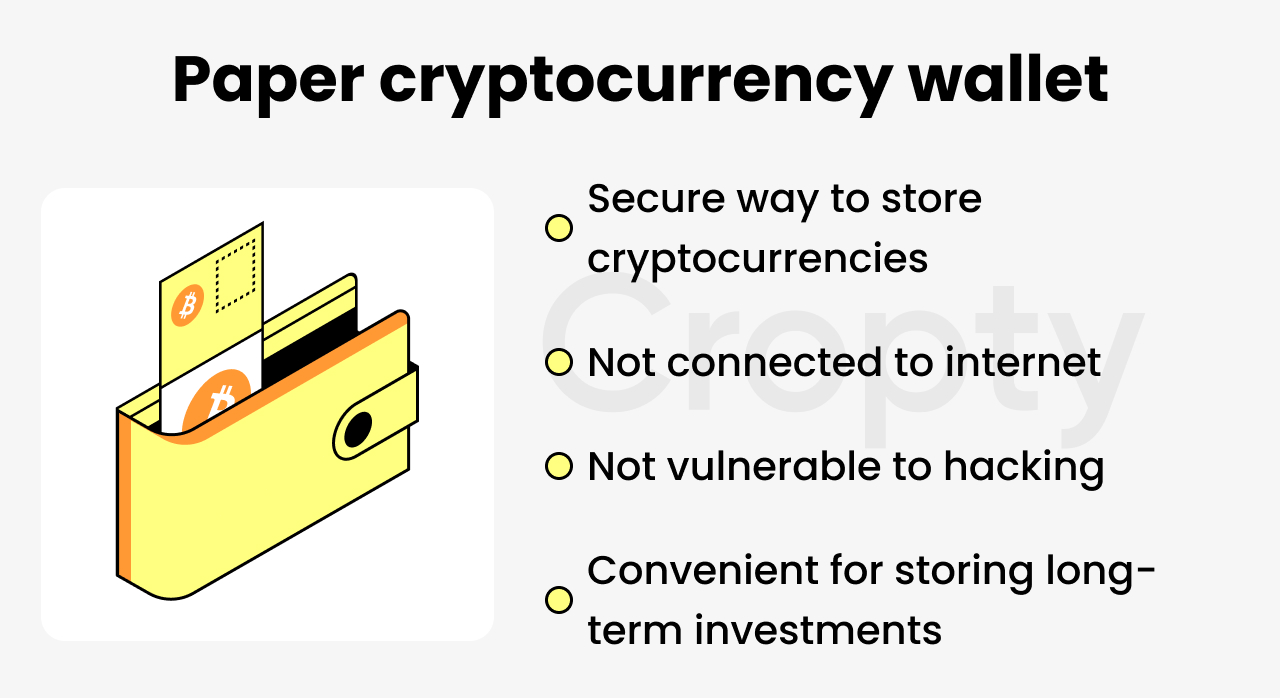
Paper wallets are the safest way to store cryptocurrency assets because they are not connected to the internet and are not vulnerable to hacking. They are an ordinary piece of paper on which your wallet’s public and private keys are printed. Because of their simplicity and independence from technology, paper wallets can be handy for storing long-term investments or backups of cryptocurrency assets. However, using a paper wallet for transactions requires importing keys into an online or desktop wallet, which can be less convenient than other wallet types.
In summary, choosing the type of cryptocurrency wallet depends on your preferences and needs for usability, security, and affordability.
Set up a crypto wallet
As we already know, a cryptocurrency wallet is an essential tool for storing and managing cryptocurrencies. Now we will look at simple step-by-step instructions on how to create different types of cryptocurrency wallets.
Mobile cryptocurrency wallet
Mobile cryptocurrency wallets are designed to be used on smartphones (tablets) and allow you to manage crypto assets anytime, anywhere.
To set up a mobile cryptocurrency wallet, follow these steps:
Step 1: Choose the right wallet app for your operating system (e.g. Coinbase, Cropty, Trust Wallet or other).
Step 2: Download and install your chosen app from the official app store.
Step 3: Register in the app by following the instructions and create a seed phrase.
Step 4: Save the seed phrase in a safe place. It is the only way to access your crypto-assets.
Step 5: Once your registration is complete, you can start receiving, sending and storing various cryptocurrencies in your mobile wallet.
Online cryptocurrency wallet
Online cryptocurrency wallets are accessible through a web browser and provide convenient access to crypto-assets. To set up an online cryptocurrency wallet, follow these steps:
Step 1: Choose a reliable online wallet platform (e.g. MyEtherWallet, Blockchain.com, and others).
Step 2: Go to the website of the selected wallet and click “Create new wallet” or similar.
Step 3: Create a password for your wallet and save it in a safe place.
Step 4: Save the seed phrase provided by the wallet.
Step 5: After completing the registration process, you will have access to your online wallet where you can manage your crypto-assets.
Desktop cryptocurrency wallet
Desktop cryptocurrency wallets give users full control over their digital assets by storing them on their computer. To set up a desktop cryptocurrency wallet, follow these steps:
Step 1: Choose a suitable desktop wallet according to your cryptocurrency (e.g. Bitcoin Core, Ethereum Wallet).
Step 2: Go to the official website of the selected wallet and download its software.
Step 3: Install the wallet software on your computer by following the instructions on the screen.
Step 4: The first time you launch the wallet, create a seed phrase and save it in a safe place.
Step 5: Once setup is complete, you can use your desktop wallet to send, receive, and store your cryptocurrency.
We want to warn new users of desktop crypto wallets. It is often difficult for many users to use a classic desktop wallet such as Bitcoin Core. This is due to the fact that it synchronizes with the blockchain, which takes a long time, and also downloads the entire data chain of the network and takes almost 500 GB of computer memory. For this reason, many users refer to the Bitcoin Core wallet as “heavy”.
To verify the size of the bitcoin blockchain, there is a graph of its blockchain size. This graph is static and is updated every day based on network data. The graph allows you to check the size of the blockchain and the value of the crypto asset at the same time:
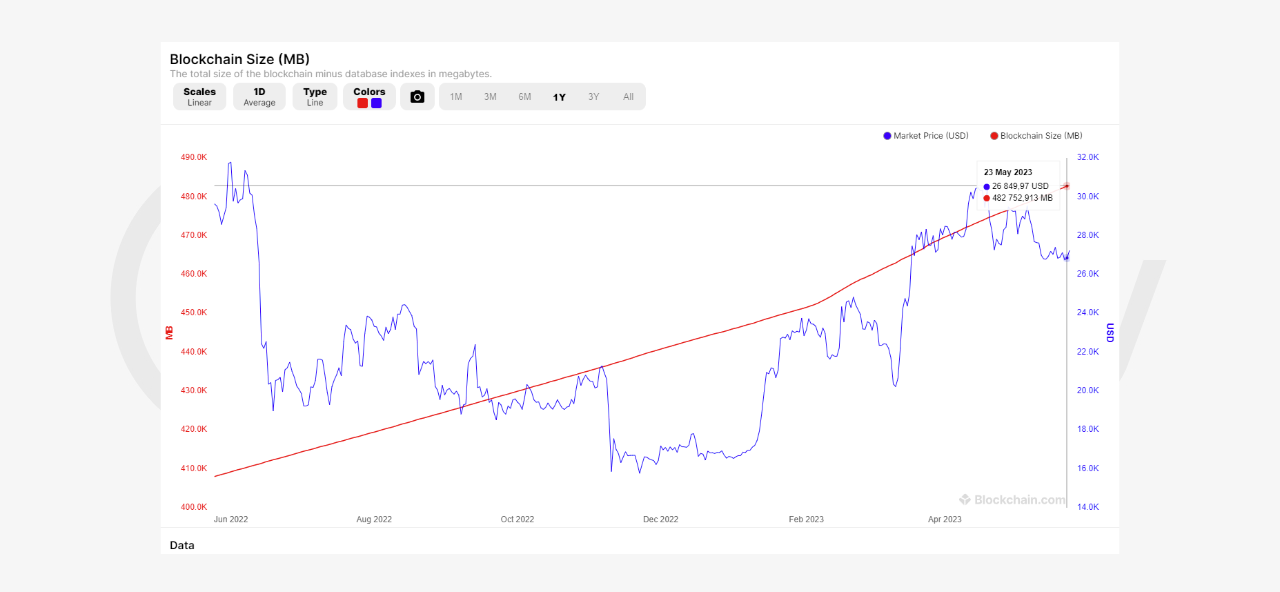
As we can see from the graph, at the bottom there is a date scale (month and year). On the left is the scale of blockchain size in megabytes. On the right is the scale of bitcoin value in U.S. dollars. The blue curve shows the change in bitcoin price since June 2022. The red curve shows the change in bitcoin blockchain size over the same period.
Putting the cursor in the upper right corner on the red curve line, we got the bitcoin price and its blockchain size as of May 23, 2023. So the size of the bitcoin blockchain as of May 23, 2023 is about 483 gigabytes. Impressive size, isn’t it?
That’s why most users will prioritize the use of “light” desktop wallets. You don’t need to download the entire blockchain to use them. The bulk of it is stored on third-party servers to which the wallet is connected, and the client part stores only its own transactions.
Paper cryptocurrency wallet
Paper cryptocurrency wallets are a physical document on which your wallet’s public and private keys are printed. To set up a paper cryptocurrency wallet, follow these steps:
Step 1: Use a reliable online paper wallet generator (such as bitaddress.org).
Step 2: Go to the generator’s website and follow the instructions to create a new wallet.
Step 3: Generate a pair of keys – public and private.
Step 4: Print the paper wallet and keep it in a safe place, protected from physical access and damage.
Step 5: To perform transactions with the paper wallet you will need to import the private key into an online or desktop wallet.
Supported crypto wallet platforms
Based on the data provided, we have compiled a list of the most relevant and popular crypto wallets. Each crypto wallet from the list reflects all available platforms for its use.
| Name | Availability | Platform |
| Atomic wallet | MacOS, Windows, Ubuntu, Debian, Fedora, Android, iOS | Desktop, Mobile |
| Binance wallet | Browser (Chrome, Firefox, Brave, Edge), Android, iOS, MacOS, Windows, Linux | Web, Mobile, Desktop |
| Bitcoin Core wallet | MacOS, Windows, Linux | Desktop |
| BitGO wallet | MacOS, Windows, Linux, Android, iOS | Desktop, Mobile |
| Blockchain.com wallet | Browser (Chrome, Firefox), Android, iOS | Web, Mobile |
| Broex wallet | Browser (Chrome, Firefox), Android, iOS | Web, Mobile |
| Coinbase wallet | Browser (Chrome), Android, iOS | Web, Mobile |
| Coinomi wallet | MacOS, Windows, Linux, Android, iOS | Desktop, Mobile |
| Cropty wallet | Browser (Chrome), Android, iOS | Web, Mobile |
| Crypto.com wallet | Browser (Chrome), Android, iOS, Windows | Web, Mobile, Desktop |
| Electrum wallet | MacOS, Windows, Linux, Python, Android | Desktop, Mobile |
| Exodus wallet | Browser (Chrome, Brave), Android, iOS, MacOS, Windows, Linux | Web, Mobile, Desktop |
| Huobi wallet | Browser (Chrome), Android, iOS, MacOS, Windows | Web, Mobile, Desktop |
| Jaxx wallet | Browser (Chrome), Android, iOS, MacOS, Windows, Linux | Web, Mobile, Desktop |
| Mycelium wallet | Browser (Chrome), Android, iOS | Web, Mobile |
| MyEtherWallet | Browser (Chrome), Android, iOS | Web, Mobile |
Conclusion
It should be noted that when creating a cryptocurrency wallet, it is very important to follow security measures. Be sure to back up your secret recovery phrases and store them in safe places. Also, update the wallet software regularly and follow the security recommendations provided by the developers.
Creating a cryptocurrency wallet can be the first step in your journey into the world of cryptocurrency. Proper organization and secure storage of your digital assets is key to protecting your crypto portfolio.
How to set up a crypto wallet FAQ
What data do I need to set up a cryptocurrency wallet?
When setting up a cryptocurrency wallet, you may need basic data such as a username, password, and/or a secret recovery phrase.
How do I secure my cryptocurrency wallet?
To keep your cryptocurrency wallet secure, it’s important to use strong passwords, enable two-factor authentication, keep key backups, and avoid suspicious links or programs.
Can I have multiple cryptocurrency wallets?
Yes, you can have multiple cryptocurrency wallets for different digital assets or different purposes.
Can I set up a cryptocurrency wallet anonymously?
The ability to set up a cryptocurrency wallet anonymously depends on the specific platform or service. Some wallets may provide the ability to set up a wallet without providing personal information, while others may require you to go through an identification process.
What information do I need to receive payments to my cryptocurrency wallet?
In order to receive payments to your cryptocurrency wallet, you will usually need to provide a public wallet address. This address can be found in your wallet settings or can be generated for each transaction.
Can I use one wallet for different cryptocurrencies?
Yes, some wallets support multiple cryptocurrencies and allow you to manage different digital assets in one wallet. However, not all wallets support all types of cryptocurrencies, so check the list of supported assets before using them.
How often should I back up my wallet?
We recommend backing up your wallet regularly, especially after creating new addresses or performing important transactions. This will help prevent loss of access to assets in case of unforeseen situations.
What to do if I forgot my cryptocurrency wallet password?
In most cases, if you forget your cryptocurrency wallet password, you won’t be able to recover it. That’s why it’s important to keep your password and secret recovery phrase in a safe place. If you lose your password, the only way to regain access is to use a wallet backup or create a new wallet.
What is a wallet backup and why do I need it?
Backup wallet is a copy of your wallet, which contains private keys and other important information. Backup is necessary to restore access to the wallet in case it has been lost or damaged.
Can I have one wallet on multiple devices?
Some wallets allow you to have the same wallet on multiple devices by syncing or logging into your account from different devices. This provides convenience and accessibility to your assets from different platforms.

